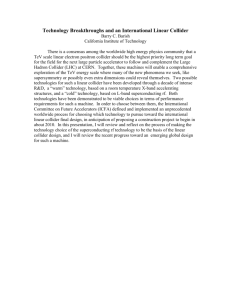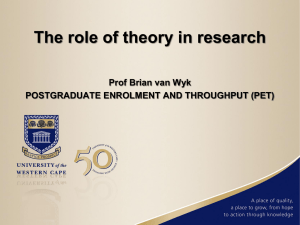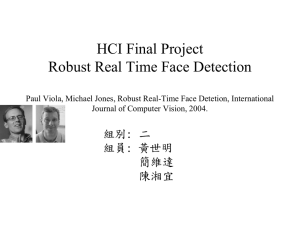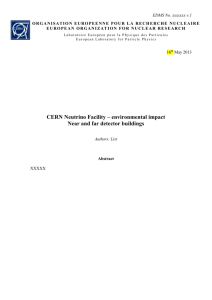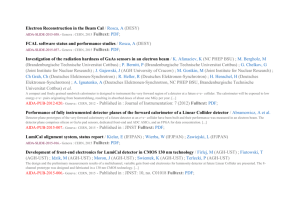Departmental research is devoted to measurements in the field of
advertisement
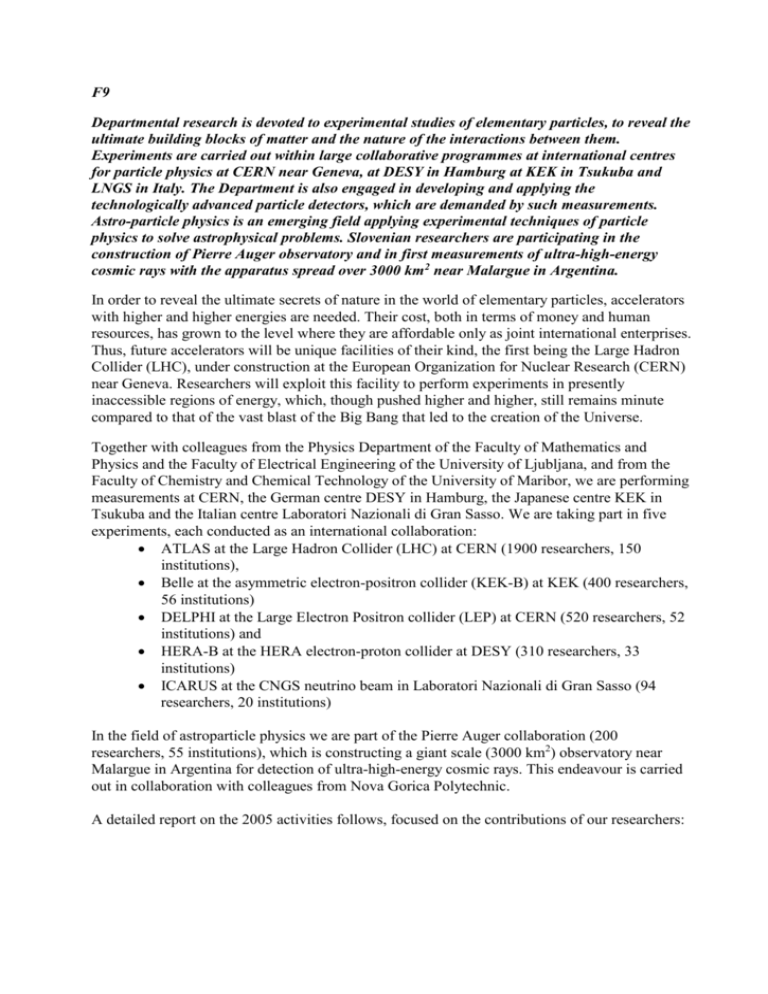
F9 Departmental research is devoted to experimental studies of elementary particles, to reveal the ultimate building blocks of matter and the nature of the interactions between them. Experiments are carried out within large collaborative programmes at international centres for particle physics at CERN near Geneva, at DESY in Hamburg at KEK in Tsukuba and LNGS in Italy. The Department is also engaged in developing and applying the technologically advanced particle detectors, which are demanded by such measurements. Astro-particle physics is an emerging field applying experimental techniques of particle physics to solve astrophysical problems. Slovenian researchers are participating in the construction of Pierre Auger observatory and in first measurements of ultra-high-energy cosmic rays with the apparatus spread over 3000 km2 near Malargue in Argentina. In order to reveal the ultimate secrets of nature in the world of elementary particles, accelerators with higher and higher energies are needed. Their cost, both in terms of money and human resources, has grown to the level where they are affordable only as joint international enterprises. Thus, future accelerators will be unique facilities of their kind, the first being the Large Hadron Collider (LHC), under construction at the European Organization for Nuclear Research (CERN) near Geneva. Researchers will exploit this facility to perform experiments in presently inaccessible regions of energy, which, though pushed higher and higher, still remains minute compared to that of the vast blast of the Big Bang that led to the creation of the Universe. Together with colleagues from the Physics Department of the Faculty of Mathematics and Physics and the Faculty of Electrical Engineering of the University of Ljubljana, and from the Faculty of Chemistry and Chemical Technology of the University of Maribor, we are performing measurements at CERN, the German centre DESY in Hamburg, the Japanese centre KEK in Tsukuba and the Italian centre Laboratori Nazionali di Gran Sasso. We are taking part in five experiments, each conducted as an international collaboration: ATLAS at the Large Hadron Collider (LHC) at CERN (1900 researchers, 150 institutions), Belle at the asymmetric electron-positron collider (KEK-B) at KEK (400 researchers, 56 institutions) DELPHI at the Large Electron Positron collider (LEP) at CERN (520 researchers, 52 institutions) and HERA-B at the HERA electron-proton collider at DESY (310 researchers, 33 institutions) ICARUS at the CNGS neutrino beam in Laboratori Nazionali di Gran Sasso (94 researchers, 20 institutions) In the field of astroparticle physics we are part of the Pierre Auger collaboration (200 researchers, 55 institutions), which is constructing a giant scale (3000 km2) observatory near Malargue in Argentina for detection of ultra-high-energy cosmic rays. This endeavour is carried out in collaboration with colleagues from Nova Gorica Polytechnic. A detailed report on the 2005 activities follows, focused on the contributions of our researchers: ATLAS: - Intensive installation of huge detector parts is taking place in the experimental cavern 160 m underground aiming to have the complete detector operational for first LHC collisions in spring 2007. - Production of over 4000 modules of the SCT tracker had been finished and their integration on barrels and end-cap disks is well advanced. - Detector modules with diamond sensors for the beam conditions monitor system were tested. - Radiation monitor was developed and first modules produced and installed. - New batch of flexible printed circuits with dimensions up to 3.5 m on copper-Kapton laminates were produced serving as power tapes for the SCT end-caps. - Generation of phase-space in proton collisions at 14 TeV was studied. - Background to Higgs boson searches in the Standard model and MSSM was simulated in detail. - Simulation of top quark production in proton-proton collisions was studied and a simulation programme written. - Grid infrastructure on the SiGNET computer cluster had been constantly upgraded and large amounts of simulated data were produced as part of "ATLAS Data Challenge 2". BELLE - Precision measurements of CP violation processes in the B meson system involving Penguin diagrams were improved considerably. - Measurement of the Vub CKM matrix element was improved. - We took over the responsibility of convening the charm quark studies group. - Best limits were obtained for D0 mixing parameters in semileptonic and hadronic decay channels - New charmed baryon Σc(2800) and a new, possibly charmonium state X(3940) were discovered. - Experimental evidence on the existence of the Θ(1540)+ pentaquark was refuted by our data. - Charm quark fragmentation measurement was considerably improved. - First measurement of B → DsJ K decays was performed. - Measurement of CP violation in the B→ DD decay was initiated. - Commissioning of the semiconductor tracker was performed using measured tracks. - New type of Cherenkov counter based on aerogel radiator was developed and tested in the beam. DELPHI - Final analyses were performed and prepared for publication. HERA-B - Cross sections for production of hyperons, and D and J/Ψ mesons were measured. ICARUS - Detector simulations were preformed and data analysis programmes prepared. PIERRE AUGER - Third fluorescence detector at Los Morados site was put into operation and construction of the fourth at Loma Amarilla started. - Second and third Lidar stations were installed at Coihueco and Los Morados sites. - Continuous installation of ground detectors, now covering 70 % of the planned surface, was taking place - Several ten cosmic rays with energies in excess of 1019 eV were detected. - Arrival direction anisotropy of cosmic rays was studied. Detector development - In collaboration with CERN, University of Valencia and University of Michigan, Ann Arbor a pre-clinical prototype of the Compton camera was assembled and tested. Figure 1: View into the heart of the ATLAS detector in the experimental cavern 160 m underground right after the installation of the final, eighth coil of the central toroid. Figure 2: Distribution of masses recoiling against reconstructed J/Ψ in inclusive e+e-→ J/Ψ X events. The peak centered at 3.940 GeV/c2 corresponds to the new state X(3940). Figure 3: LIDAR station in the Argentinean pampa near Malargue. Our hardware contribution to the Pierre Augere detector uses scattered light from lasers to monitor atmospheric conditions, paramount for proper evaluation of the fluorescence detector data.



